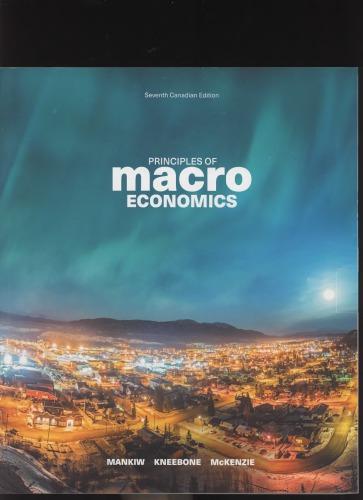12. A case study in the chapter analyzed purchasing- power parity for several countries using the price
Question:
12. A case study in the chapter analyzed purchasing- power parity for several countries using the price of Big Macs. Here are data for a few more countries:
Country Price of a Big Mac Predicted Exchange Rate Actual Exchange Rate Indonesia 30 500 rupiah
—
rupiah/
$US 13 344 rupiah/$US Hungary 900 forint
—
forint/
$US 283 forint/$US Czech Republic 70.0 koruna
—
koruna/
$US 24.7 koruna/$US Thailand 108 baht
—
baht/
$US 34.1 baht/$US China 17.0 yuan
—
yuan/
$US 6.21 yuan/$US Source: Based on data from “The Big Mac Index," The Economist Newspaper Limited, London. July 16,2015. http://www.economist.com/content/big-mac-index
a. For each country, compute the predicted exchange rate of the local currency per U.S. dollar. (Recall that the U.S. price of a Big Mac was $4.79.) How well does the theory of purchasing-power parity explain exchange rates?
b. According to purchasing-power parity, what is the predicted exchange rate between the Hungarian forint and the Chinese yuan? What is the actual exchange rate?
Step by Step Answer:

Principles Of Macroeconomics
ISBN: 9780176591977
7th Canadian Edition
Authors: N. Mankiw, Ronald Kneebone, Kenneth McKenzie






